High energy, go-go rhythms pulsed through the venue as the audience sang, danced and swayed to homegrown go-go beats celebrating the anticipated 11th Street Bridge Park.
What was the groove? “Take it to the Bridge,” a go-go style, funk track rooted in the D.C. sound. The song, which will serve as the official anthem of the 11th Street Bridge Park, was released Oct. 5 at the Go-Go Museum.
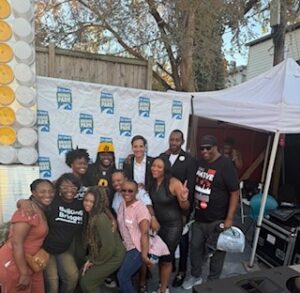
The 11th Street Bridge Park, a transformational elevated bridge park development, held its song release party to celebrate development and determination—honoring the city’s past and future.
The song was written by D.C.’s own grammy-nominated artist Raheem DeVaughn, produced by the famed Lorenzo Johnson aka Zo Smooth and co-produced by go-go legend, Salih Williams, better known by his stage name Bootsy Vegas, brings local rhythms interwoven with community spirit.
Devaughn and Williams said they took on this project because it was more than just a musical endeavor; it was a community driven initiative to create positive change and celebrate D.C.’s rich cultural history.
“Through music, we can communicate,” Williams said, “There’s a lack of historical understanding about a lot of these projects.”
A bridge like no other.
Thirteen years in the making, the project is now fully funded, is expected to break ground in spring of 2026 and launch in 2028.
A collaboration between the D.C. government and Building Bridges Across the River non-profit, Bridge Park strives to be the model for equitable development—strategically focused on housing, the arts, workforce and small business development.
Scott Kratz, the president and CEO of Building Bridges Across the River, said Bridge Park is a different kind of project.
“We’ve learned from projects of the past where residents have been displaced,” Kratz said. Gentrification, emblematic of D.C. evolving neighborhoods, has long plagued well-intentioned projects across the District.
“We had to be intentional about this work,” Kratz said. “It would have been easy to say, gentrification is a serious issue, but that’s not our job—we’re building a park.”
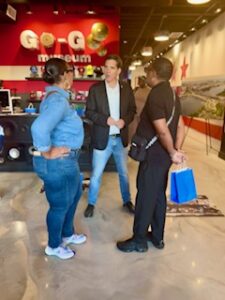
Kratz said before engaging a single designer, Bridge Park spent two years talking to residents, asking, “What did they think about transforming an old freeway into a park?”
The inclusive, community-led development will be the first of its kind—transforming the old, abandoned 11th Street Bridge piers into a cutting-edge, elevated park. The vision is to create a community space that integrates historically disenfranchised neighborhoods east of the Anacostia River and the surrounding communities.
The Bridge Park will include playgrounds, urban agriculture, an Environmental Education Center and a 250-seat outdoor River Amphitheater.
Lovail Long, a Ward 8 resident and owner of DC Black Broadway, said, “This project means everything to me.”
Long, who produces stage plays and musicals, said the amphitheater will offer a space where he’ll be able to perform live for the community. Like his fond childhood memories of performances in Anacostia Park, Long said he and his wife wants to create memories through arts and music for a new generation of children.
Kratz said intentional development puts the community at the center. Building Bridges has invested more than $100 million in the community—more than needed to build the park. Through community-based initiatives like Homebuyer’s Club, 182 Ward 8 renters became homeowners and Bridge Park has secured 230 units of permanently affordable housing.
Bridge Park even worked with local artists and the community to create the anthem song befitting of this visionary park.
And the go-go beat goes on.
The percussion-driven go-go anthem was commissioned and curated by Ronald Moten, co-founder of the Go-Go Museum, along with Bridge Park leaders to symbolize the partnership between the Bridge Park development and the community.
Natalie Hopkinson, co-founder and chief curator of the Go-Go Museum and professor at American University, said, “go-go music is the official music of the D.C., codified in legislation,” so elevating the music is only natural.
Just as Moten cofounded the museum to preserve the culture and history of his beloved go-go music, he said he partnered with the 11th Street Bridge Park because of its community-led, community-driven approach.
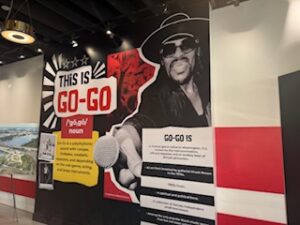
Through the loud, reverberating music, Moten said, “We started differently from most museums—most opened with an endowment—we opened with no money and people banging on the door asking us why aren’t you open,” noting parallels to the Bridge Park grassroots development approach.
DeVaughn, host of “The Original Quiet Storm,” the number one night-time show in D.C., said creating the anthem was a passion project to help the community and elevate go-go music.
After being “schooled” on the historical context of the bridge and learning enslaved people walked the original 11 Street Bridge every day, he said the project resonated with is lifelong commitment to the music and community.
DeVaughn said he views the song and performance as a way to bridge gaps and support black-owned businesses and create a platform that celebrates go-go—the heartbeat of D.C.
“Most importantly, we’re about having a footprint in the community and being of service,” DeVaughn said.
A former co-host of the famed Donnie Simpson Show, Williams said he came to “perform with a purpose.” Co-producing the song not only honors go-go pioneer Chuck Brown’s legacy, Williams said, “it brings people together who might not have been checking for go-go but left with an appreciation.”
In addition to creating music, Williams now dedicates his time to teaching kids broadcast journalism. He said he partnered with the D.C. Department of Parks and Recreation to teach journalism and provide scholarships to high school students in Ward 7 and 8.
Williams said creating the Bridge Park anthem with Johnson and DeVaughn was a natural extension of his work supporting his community where he was born, raised and still lives.
It’s about the community.
“A community on the river,” Kratz said. “Many people in the community have never been out on boats.”
Building Bridges works with local boating organizations like Seafarer’s Yacht Club and Anacostia Boathouse Association to connect the community with the Anacostia River. Bridge Park partners to offer free boat rides and to give community members an opportunity to kayak and canoe along the river.
D.C. transplant and American University Alum Jayra Collier’s employer Plum Good has been a Bridge Park sponsor for eight years. Collier said through its partnership, Park Bridge has promoted its teas, spices and sauces.
Collier said she hopes other transplants like herself will get to see “The real D.C.,” to promote local businesses and have a space to enjoy and rest.
Residents living along the Anacostia River deserve a waterfront just as beautiful as the residents of Georgetown,” Kratz said.
The song release party symbolizes a celebratory reflection of where the project started. Kratz said, “Long term residents who’ve been here through some of the challenging times, through the disinvestment, can be here for the good times.”
Much like D.C.’s syncopated go-go music, the future of the Anacostia community history must be preserved, said Dr. Deborah Evans, board member of the Go-Go Museum.
“Progress is good, but we have to maintain the history of the community.”

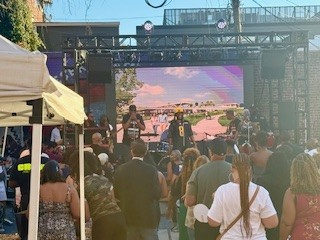
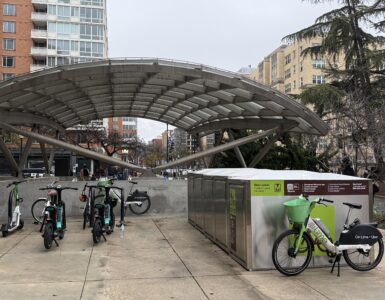
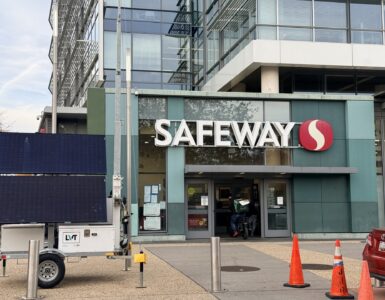
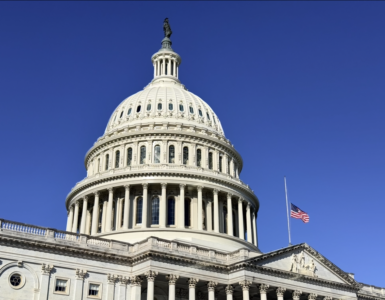










Add comment